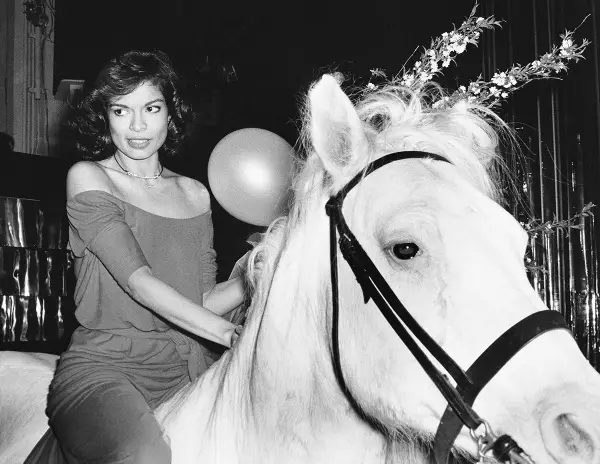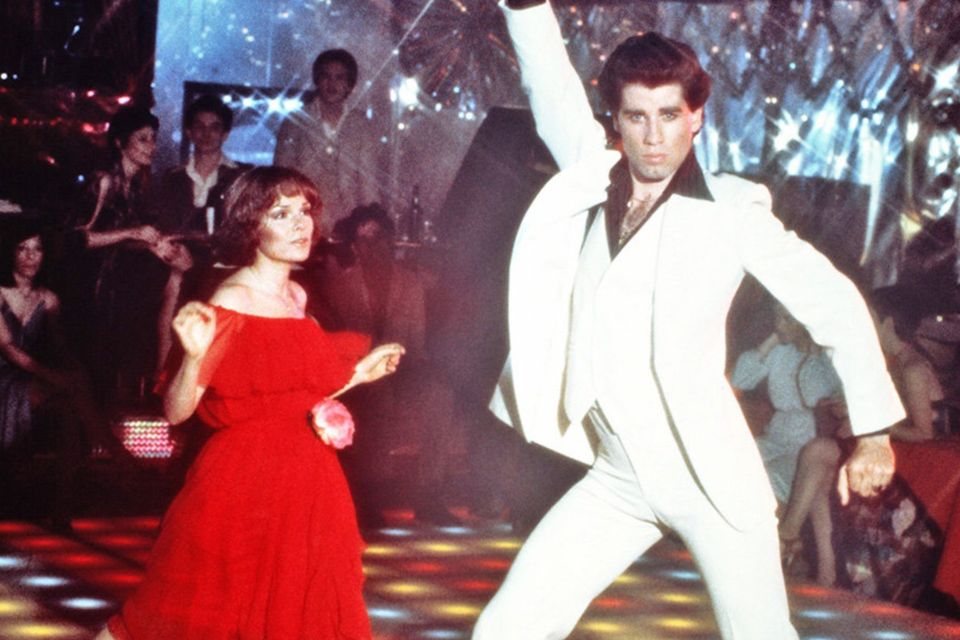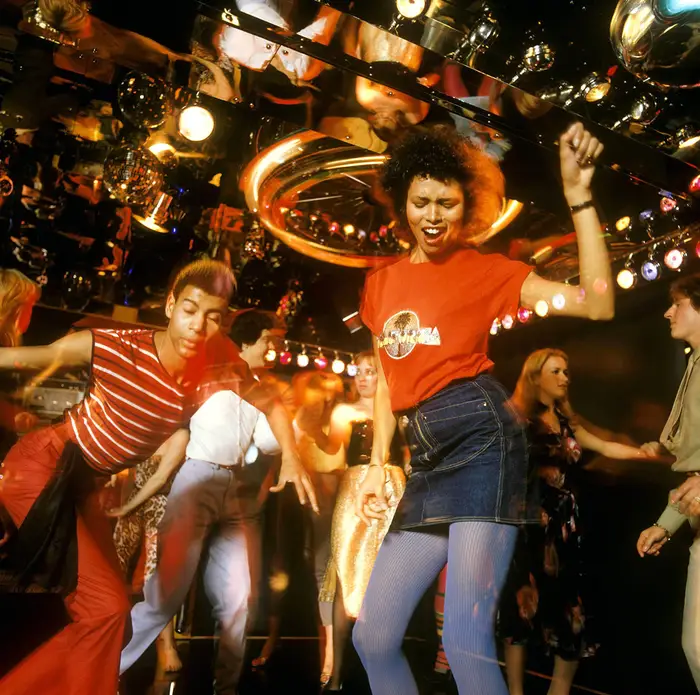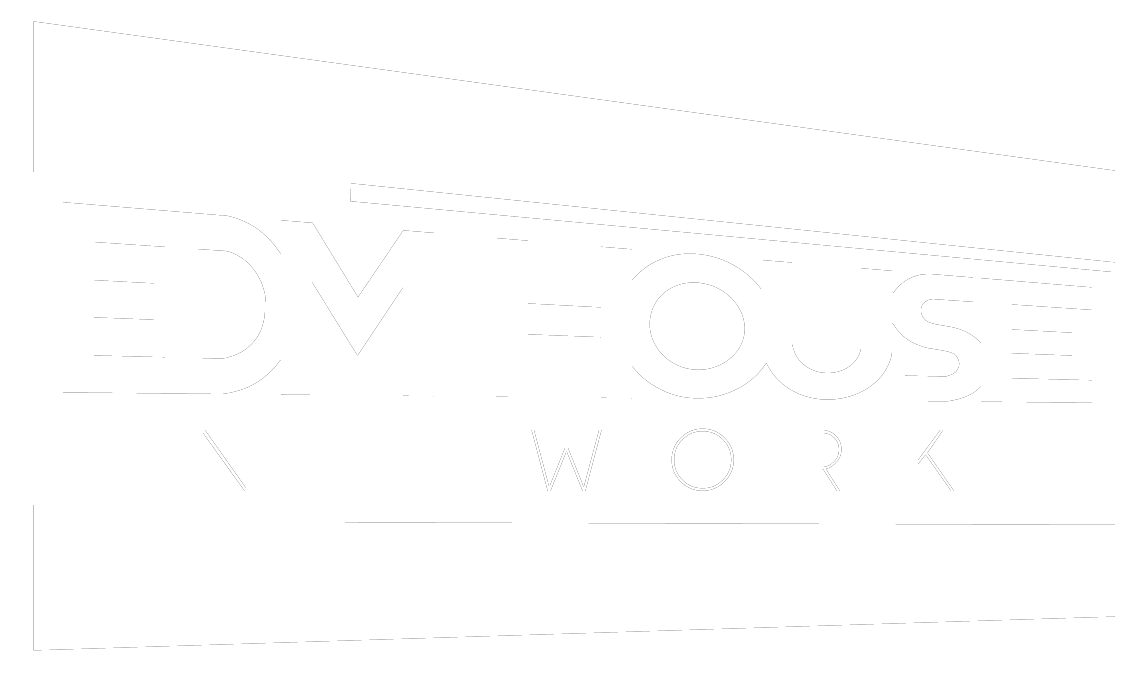Originating in the early 1970’s Disco emerged as more than just a music genre but as a lifestyle and a symbol for groups who were traditionally marginalized. Although there is no consensus on the birthplace of Disco, we can all agree that disco has made its mark on the world and more specifically on Electronic music as we know it today.
In this deep dive we’re taking you on a journey from Disco’s roots to the present with some conversations of some of the heavy hitters in the scene today. Interviews with Dr Packer, Dave Lee, and Rikky Disco with their insight to the scene and its evolution are included throughout the article. These three artists are leading the charge in keeping Disco alive across the globe and it was a honor to have their contributions to this article.
Okay now with all that being said, let’s turn back the clock to the 1970’s:
The Birth of Disco (Early 1970’s)
Taking it from the very top, the word Disco derives from the French word discotheque (dance club) which came into the general vernacular in the 1960’s. Disco had its early beginnings in underground clubs in New York, Germany, France, that were popular among predominantly black, LGBT, and Latino dancers. At these clubs DJs would spin extended play single records. It was at this time where DJs became stars rather than being background music. The center and focus around DJs as we know it today started from the Disco movement.
In the 1970’s, Disco emerged as a counterculture to the social norms of the times. It was during this time that civil rights, women’s liberation and LGBT rights were gaining momentum. It was in this context that Disco gave a voice to those who in the past were not able to speak their truth. Disco allowed for people from all walks of life to come together for the love of the music, similar to raves and festivals as we know it today. Think of how many people you’ve met from all over the world during festival season with different backgrounds and experiences than you. Disco is what started it all.
How would you describe the evolution of disco music from its origins to the present day?
Dave Lee: Disco has survived much longer than I think anyone would have predicted. I was 15 in 1979 and the attitude in most press and on the radio was that it was throwaway music which wouldn’t stand the test of time. One of the reasons it has had such a massive resurgence is technology based, meaning it’s been sampled and regurgitated since the beginnings of house music. From the late 80s onwards it’s been largely DJs who are making dance records, they often can’t write songs, so instead like to remix, sample and remake their favourite old records. The development of samplers has made producing new music based on old records much easier and cheaper.
Also, Disco is the party music of now. Back when I was a kid Motown was the old music that was played at weddings and many clubs that got everyone singing along on the dancefloor. Today it’s the big Disco hits that perform that roll. The reason being the big Disco hits are both memorable and catchy, whilst sonically they still sound great. Even many of the Rock guys I know who hated Disco back in the day now appreciate how well-crafted and performed those records were.
Rikky Disco: The evolution of Disco music spans several decades and has undergone various transformations since its origins in the 1970s. During the 80s, Disco experienced a decline in mainstream popularity, its influence persisted in underground dance scenes. Electronic dance music (EDM) began to incorporate disco elements, with artists using synthesizers and drum machines to create a new sound. Throughout the years Disco has diversified itself into various subgenres, including Eurodisco, Hi-NRG, and Italo-Disco. Meanwhile other genres as Hip-Hop and Pop been sampling classic Disco tracks into their productions.
Disco Fever (mid to late 1970’s)
In the mid-1970’s Disco transcended from beyond the clubs and onto the radio. Looking for example at the US Top 40 in 1976, the top artists were all disco. It was during this time that Donna Summer rose to fame and left her mark on the scene with hits such as ‘Love to Love You Baby’, ‘Last Dance’, and ‘Hot Stuff’.
Another notable artist from this time period was Gloria Gaynor, best known for ‘I Will Survive’ and ‘Let Me Know’, these Disco Queens were household names in the scene and continue to live on through remixes that we hear today both on the radio and at raves and festivals.
As Disco became more and more popular on the radio, its popularity in nightclubs was no different. In 1977, the legendary Studio 54 opened its doors on 54th Street in New York City. Studio 54 would come to be the home of infamous parties featuring celebrities, live animals, and some scandalous moments (I’m still waiting for my dad to tell me what actually happened there!).

That same year, the film Saturday Night Fever, catapulted Disco even further into the mainstream. The soundtrack of the movie by the Bee Gees included ‘Stayin’ Alive’ and ‘Night Fever’ which became synonymous with the Disco era. The movie featuring John Travolta told the story of a young Italian-American who dances the weekends away at a local Disco to escape the troubles in his personal life. Saturday Night Fever also showcased the flashy and over-the-top style of dress that went hand in hand with Disco music.

Who, in your opinion, are the most influential artists in the history of disco, and what makes their contributions significant?
Dr. Packer: For me personally producers such as ‘Giorgio Moroder, Patrick Adams & Rod Temperton’ get my vote as they were behind some of the biggest tracks from that era such as ‘Donna Summer – I Feel Love’ which some even suggest that started off Techno music.
Dave Lee: Most Disco was studio music, it was led by the producer and writers. Usually, the singers and artists we saw perform on TV weren’t actually making the songs. in many cases they were hired to front the act if the record looked like it had crossover appeal. It’s one of many things that annoyed the Rock press, as it made the whole genre deposable to them. In their view Disco represented the opposite of a “proper artist” like Bob Dylan who was a singer song writer and has something to say with his lyrics. Disco wasn’t about political lyrics, the vocals are often use like another instrument and the message is about love, dancing or having fun – which journalists (who are words smiths themselves) didn’t respect. Of course, they were exceptions such as Sylvester but not that many. So, if I was going to name the most influential artists I would list the producers who actually made those iconic records – Bernard Edwards & Nile Rogers, Kenny Gamble & Leon Huff, Georgio Moroder & Pete Bellote, Cerrone, Patrick Adams, Rinder & Lewis, Freddie Peren, Leon Sylvers, Baker Harris Young, Patrick Cowley, Randy Muller. Even the Bee Gees, yes it was Pop Disco but amazing songs that took things mainstream and made disco bigger than it would have been without them.
Rikky Disco: The start of Giorgo Moroder & Donna Summer collaboration with the songs “I Feel Love”. Partly because it was totally revolutionary to use a synthesizer and drum machine to program the music in that way and in combination with Donna summer´s striking voice and Song melody and lyrics it took us listeners to a place we´ve never experienced before.
Disco Demolition Night (1979)
As fun as of this sounds and, side note I often wonder what I would have worn at Studio 54, it sounds wild, there was dark side to all of this. A backlash went into full force in the late 1970’s against Disco and everything that it stood for. On July 12, 1979, Disco Demolition Night was a baseball promotion event at Comiskey Park in Chicago, Illinois that spiraled into a riot. Chicago’s baseball team, the White Sox were having a rough season, so in order to boost ticket sales, admission was discounted for attendees who turned in a Disco record. In between the games that night, anti-Disco pundit Steve Dahl destroyed all the records that were turned in. At one point in the evening a crate filled with records was blown up on the field. The stadium was so damaged that the White Sox had to forfeit the second game.
Disco Today (1980’s – Present)
Although Disco experienced a decline in the mainstream, its influence, and legacy lives on all over the world. The turn of the century saw a resurgence of interest in Disco which became what we know today as Nu-Disco. The sound of Disco has also been reimagined and sampled through modern day Electronic Dance Music and is still often played on the radio or during Disco throwback nights.
There’s a perception that disco “died” at a certain point. What are your thoughts on this, and do you agree with that characterization?
Dr. Packer: Well this was well before my time (late 70s) I was born in 1972 so I can only go on what I’ve read from researching , I just heard stories of American rock fans destroying disco records around 1979 , also it was no longer about the ‘Love’ but more about the ‘Love of money’ due to record companies getting greedy , whether this is true or not will remain a mystery to me , all I know is that it’s great music and I love the balance of delivering it in a new way to today’s dancefloors.
Dave Lee: Disco died more in America than here in Europe. Disco was never a dirty word in the UK (unless you hated it all along) and the music never really stopped being played. However, in the USA there was a proper backlash with many labels and radio stations quick to drop it and distance themselves from disco, this was partly masterminded by the rock community who hated and felt threatened by disco. I recall when visiting the USA in the late 80s some people would raise an eyebrow if you talked about disco positively. However, I would add that it’s easy to get a little misty eyed about disco now, there was a lot of rubbish released in the mid/late 70s, often produced purely with the aim of making a quick buck, be it disco cover versions of old show tunes or TV celebrities/cartoon characters making a disco record. Disco was a craze, and those crap gimmicky records often got more exposure than the better stuff.
Rikky Disco: After spending many hours listening to classic disco from the early days up until today it would be more accurate to view it as a transformative phase rather than a complete death.
DJs and producers continued to incorporate disco elements into their mixes, and the genre experienced a revival in various forms in the 1980s and beyond. The genre has demonstrated resilience and adaptability, leaving a lasting legacy that continues to influence music and culture across genres and generations.
Conclusion
From the early days to underground clubs to taking over the mainstream, Disco has undergone an incredible evolution. Disco has proven itself time and time again that it is more than a genre of music but a movement, similar to electronic music today it’s more than just a night out it’s a lifestyle. In conclusion, it’s clear that Disco never died, and that Disco is here to stay!







